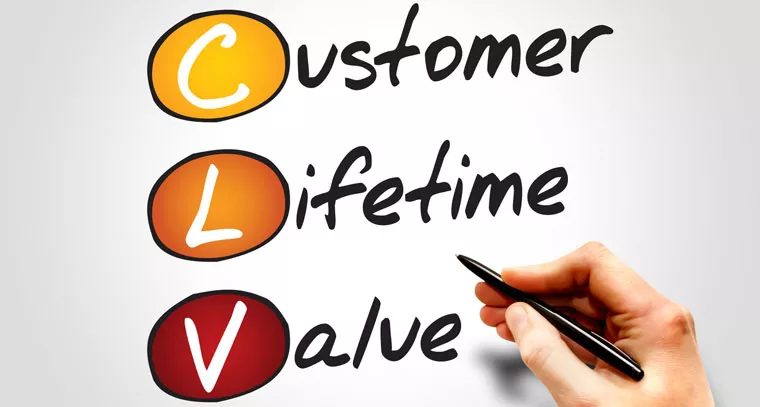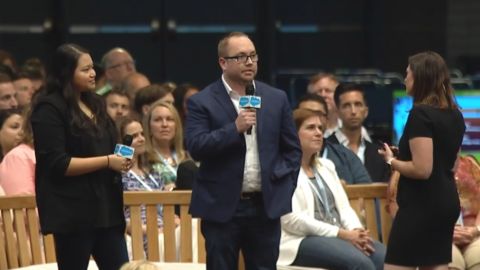Today’s marketers have lots of tools for measuring individuals’ Customer Lifetime Value (CLV). Companies like Adobe and Salesforce, along with platforms like Facebook and Google, offer data, analytics and technology to “make each customer visible to us,” said Peter Fader, the Frances and Pei-Yuan Professor of Marketing at The Wharton School, during the recent Sourcing Journal Summit.
“The differences [between customers] are staring us in the face,” Fader added. “And not only are customers vastly different from each other, but their lifetime value varies by orders of magnitude.”
Fader and Neil Hoyne, Head of Customer Analytics for Google, kicked off the Summit by making a strong case for CLV. In addition to making marketing more effective, CLV also can positively impact advertising, promotions, financials, R&D, sourcing and product design.
Advertisement
“If you can come up with a lifetime value measurement, it’s like a number shining over each customer’s head,” said Fader. CLV provides a different framework for running a retail or brand business, he added: “Rather than focusing on product, you would want to figure out what you could do for these really valuable customers. What products and services should you offer to enhance the value of those customers, and to find more customers like them?”
Using CLV Analyses To Boost Customer Retention
Until recently, CLV has stayed mostly within the walls of the marketing department. Much of marketers’ interest in CLV stems from the frustrations they experience in turning newly acquired customers into repeat customers. (This also will be a key topic for the upcoming Customer Acquisition and Retention Benchmark Survey Report from Retail TouchPoints, scheduled to publish in December.)
“Marketers are spending all this money to acquire customers, and then they make one purchase — it’s almost like they have to acquire them again,” said Google’s Hoyne. “However, if the marketer can prove that the customers they are acquiring are more valuable, they can go back to the company CFO and say ‘These are the value these customers are driving.’”
Taking a CLV-centric approach to customer measurement can cause a radical shift in how retailers and brands value their companies’ assets. “A customer-based corporate valuation means adding up the total value of each customer to determine the value of the company,” said Fader. “It’s done all the time in the apparel space. The truth is you’ll only get so far with innovation and efficiency; to succeed, you need to think of your customers as individual entities.”
The Benefits Of Catering To Top Customers
One brand that has taken the CLV concept to heart is the video game company Electronic Arts. “They had traditionally been a packaged goods company, with no visibility into their customers, but they did the pivot to CLV during the last 10 years,” Fader reported. “Now everything they look at is through the lens of lifetime value.
“They look not only at the lifetime value of each customer, but which customers have shown the greatest increase in lifetime value,” Fader added. “They find out which games these people are playing, and which scenes within the games they are staying the longest on. Electronic Arts uses this information for creative copy — they don’t have an ad agency — and they also share it with the game developers, so that they can come up with cool games to appeal to these people. They are always looking for ways to enhance these customers’ value, and to find more customers like them.”
One reason this CLV-centric focus is so effective for Electronic Arts is that the gaming industry represents an extreme of the Pareto Rule, which states that 20% of a company’s customers typically account for 80% of its business. “In gaming and apps, it’s more like 98% of the revenue comes from 0.2% of customers,” said Hoyne.
Even if the proportions are different, however, the principle is the same — and the results can be impressive. “In retail, perhaps 2.5% to 3% of the people who come to a web site actually buy something,” said Hoyne. “But for [retailers] using CLV, we’re seeing conversion rates as high as 40%.”
CLV Also Can Protect Margins
Using CLV as a retail strategy means taking a truly customer-centric point of view, and acting on it to create a real two-way conversation between the retailer and the customer. For example, e-Commerce retailers can respond to multiple signals from customers throughout the shopper journey, but too many continuously steer customers to a certain product purchase, rather than responding to shifting shopper preferences.
“As the customer is giving more signals about their behavior, do you change the way you market to them?” asked Hoyne. “Do you do anything differently, or do you just keep pushing them to buy that product — including throwing coupons to them and giving up your margin? And, do you follow them to see what they do afterwards, so you don’t have to start the relationship all over again the next time they come to your site?”
Hoyne stresses: “The relationship doesn’t have to end with the purchase. You can project it forward by multiple years. Then you can answer questions like, How do you find more of these people? How do you develop the ones you have? And how much should you spend to retain them?”
Making greater use of CLV also requires a level of discipline and accountability in dealing with low-CLV customers. “Many companies are bending over too far to keep customers,” said Fader. “If you can quantify the CLV, you can figure out what kinds of discounts you should be offering — or, what kinds of value-enhancing activities you should offer instead of discounts.”
Focusing on CLV doesn’t mean ignoring the remaining 80% of customers, but it does mean paying more attention to the high-value 20%. “Most people are content to buy once from a retailer, and then never buy again,” said Fader, who likened these kinds of interactions to a mutually pleasurable one-night stand. “That doesn’t mean you’ve failed; it means they’re not looking for a relationship.”















